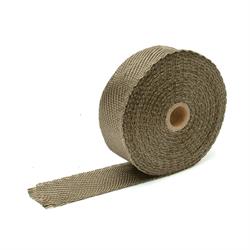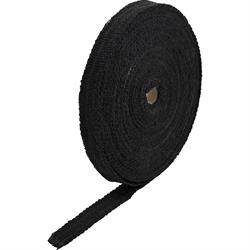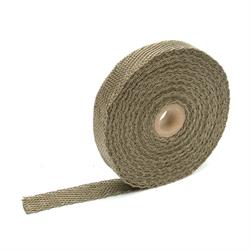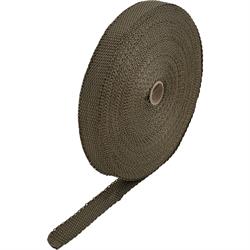Exhaust System Header Wrapping
After spending the time searching for a set of headers that finally fit your ride and meet your budget needs, it's obvious you want them to last the test of time. Then you see the guys who wrap their exhaust. If you start reading through forums or asking your fellow gearheads for their opinion about it, you might discover some mixed feelings on the topic. When it comes to wrapping the exhaust, the concern is usually with regards to heat control. Keeping the heat inside the header and out of the engine bay serves an important purpose. You have valuable electrical components, brake lines, fuel lines, etc. that need to be guarded against extreme heat. But in this article, it is our goal to look at the facts about exhaust wrap and determine whether it's the right product for you.
There are two basic reasons people wrap their exhaust: most often it's for radiant heat control, but in addition to this, there are slight performance benefits. If you look at products like DEI's Titanium exhaust wrap, they are rated to drop under the hood temperatures up to 50%, which is significant considering the amount of space we typically have to work with. On the performance end, header wraps are designed to keep the heat inside the header and by containing heat, it increases exhaust gas temperatures. This increase in temperature helps with exhaust scavenging effects which raises exhaust speeds and lowers intake temperatures.
This all sounds great! But, there is more to consider. You should always check with the individual manufacturer's warranty policy before wrapping your headers or exhaust. Most warranties become void once the headers have been wrapped. The reason being: these products are designed to hold the extreme engine temperatures inside the header. By doing this, the cool air cannot circulate around the header and when the pipes cool back down after running your engine it creates condensation inside the header. This can lead to corrosion build-up, rust, and wear the headers prematurely.
Whether you're looking for performance benefits or heat control if you decide to wrap your exhaust always check the recommended installation procedure from the manufacturer. For proper bonding, some wraps require you to coat the header before you install the wrap and some do not. As an alternative, if you're looking for longevity, you might consider simply having your headers ceramic coated. The same basic principles apply to ceramic coatings which are retaining heat on the inside and reflecting heat on the outside.



